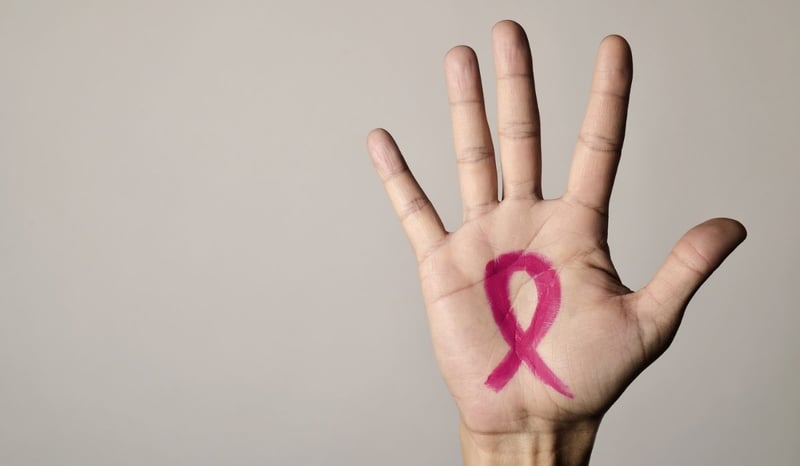
Breast cancer is an incredibly common type of disease that impacts the lives of thousands of patients each year. Statistics say that 1 in 8 women will have breast cancer in their lifetime, but it's important to remember that breast cancer does not only impact women. In fact, 1 in 833 men will also receive a breast cancer diagnosis in their lifetime.
It's important that we discuss the specifics of breast cancer in men, including the signs, symptoms, risk factors, screening, and treatment options. As with any form of cancer, early detection is key, and the more informed you are about breast cancer in men, the more likely you will identify the warning signs.
Can Men Get Breast Cancer?
It is sometimes assumed that because the male breast isn't exactly the same as female breasts, then it means that men can't have breast cancer. This is simply not true. The truth is, male breasts are similar to female breasts in that they can still contain breast tissue, milk ducts, and lobules. While men can't produce milk, the breast tissue that exists can still develop breast cancer just like any other cells in the body can.
Common Types of Breast Cancer in Men
- Ductal Carcinoma - This form of breast cancer originates in the milk ducts. It also happens to be the most common type of breast cancer in men.
- Lobular Carcinoma - This type of breast cancer originates in the milk-producing glands. It is rarer in men simply because men have fewer of these types of glands.
- Inflammatory Breast Cancer - This type of cancer is characterized by cancer cells blocking the lymphatic vessels.
Symptoms of Breast Cancer in Men
There are many signs and symptoms of breast cancer in men similar to the symptoms that women experience. Symptoms include:
- Changes in the nipple's position (becoming inverted)
- Crusting of the nipple
- Discharge from your nipple. It's not uncommon for women to assume that discharge could be milk production, but because men can't produce milk, any type of discharge would be abnormal.
- Lump in the armpit
- Lumps in the breast
- Redness or scaling of your nipple
- Swollen breast
Of course, you may not experience all of these symptoms, so it's important to notice any slight changes—different types of breast cancer present in different ways. If you notice any changes in your chest or nipples, contact your doctor right away.
Risk Factors for Breast Cancer in Men
There is not a known cause for breast cancer in men, which makes it impossible to prevent. However, there are risk factors that may indicate that you are at higher risk for developing male breast cancer. Those risks include:
- Age - The average age of men who are diagnosed with breast cancer is 72.
- Estrogen-containing medications - You are at a higher risk of developing breast cancer if you have taken drugs containing estrogen to treat illnesses such as prostate cancer.
- Family history - If a family member (male or female) has developed breast cancer, you are at higher risk of developing it. 1 out of 5 men who develop breast cancer also has a close family member who has been diagnosed with the disease.
- Klinefelter's syndrome - This disease causes men to produce higher estrogen levels, which increases the risk of developing breast cancer.
- Obesity - Men who are obese have increased estrogen levels, which increases the risk of breast cancer.
- Surgery - Surgery involving testicles puts you at a higher risk of developing breast cancer.
Keep in mind, any condition that causes a decrease in male hormones and an increase in female hormones increases your risk of developing breast cancer. If you are uncertain, ask your doctor if you may be at higher risk of developing male breast cancer.
Screening for Breast Cancer in Men
Men don't usually receive routine breast screening as women do. However, it is recommended that men who are considered to be at a higher risk of breast cancer undergo regular screening. It is suggested that high-risk men should have annual breast exams every year and self-breast exams starting at the age of 35.
If any unusual lumps or discharge are detected during these exams, then your doctor will do further testing. Additional tests used to identify breast cancer include:
- Ultrasounds
- Blood tests
- Mammograms
- MRIs
Is Treatment for Breast Cancer in Men Different from Women?
Breast cancer in men is treated very similarly to breast cancer in women who are in menopause. The specifics of your treatment plan will depend on how advanced your breast cancer is. The main types of treatment for breast cancer in men include:
- Chemotherapy - the use of drugs to kill cancer cells and prevent them from dividing and spreading
- Hormone therapy - blocks the action of hormones, which stops the cancer cells from dividing
- Radiation therapy - uses x-rays to kill cancer cells and prevent their growth
- Targeted therapy - the use of drugs to target and kill cancer cells without damaging normal cells
- Surgery - removal of the affected areas, breast tissue, or both
Because your breast cancer diagnosis is unique, your treatment plan will vary based on many factors. Your doctor and medical team will review your entire medical history and then determine which treatment option is right for you. In some instances, a combination of treatments is suggested for the best outcome.
Be Proactive About Your Health to Catch Breast Cancer Early
Understanding the warning signs and early symptoms, and knowing if you are in a high-risk category for developing breast cancer, are all proactive ways to protect your health. With locations in Portland, Oregon, and Vancouver, Washington, Compass Oncology is dedicated to keeping our patients as informed as possible.



